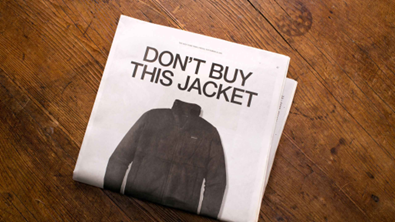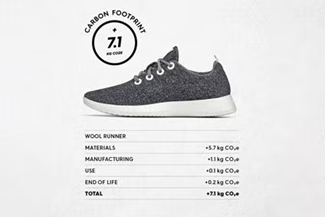Introduction: Green Isn’t Just a Trend—It’s the Future of Marketing
In a world where climate change is no longer tomorrow’s problem, consumers today are holding brands accountable for their environmental impact. But they’re also rewarding the ones who take action. Sustainable marketing is not just a buzzword in 2025—it’s a business imperative.
Consumers, especially Millennials and Gen Z, are demanding transparency, purpose, and environmental commitment. Brands that can authentically align with these values are winning both loyalty and market share.
This article explores how modern brands are embracing sustainable marketing, transforming their operations, communication, and product offerings to build a greener future and a stronger business.

What Is Sustainable Marketing?
Sustainable marketing refers to strategies and campaigns that promote environmental, social, and ethical responsibility, while also ensuring long-term business growth.
It Involves:
- Environmentally friendly packaging and products
- Carbon-conscious supply chains
- Purpose-driven campaigns
- Transparent sustainability reporting
- Community and environmental partnerships
It’s not just about selling green products—it’s about ensuring the entire marketing journey respects the planet.

Why Sustainable Marketing Matters More Than Ever in 2025
| Statistic | Impact |
| 81% of global consumers | Want brands to be more sustainable in their messaging and products |
| 70% of Gen Z shoppers | Will pay more for eco-conscious brands |
| 65% of companies | Now include sustainability KPIs in marketing team performance reviews |
The takeaway? Greenwashing is out. Green action is in.

How Brands Are Going Green: Real-World Sustainable Marketing Examples

1. Patagonia: The Poster Child of Eco-Marketing
Patagonia’s entire business is built around activism, anti-consumerism, and repair culture.
- Their famous “Don’t Buy This Jacket” ad encouraged product reuse
- 1% of their sales go to environmental causes
- Their website features repair tutorials instead of only product pages
Marketing Message: Buy less, but buy better.


2. Dove: Rethinking Packaging and Purpose
Dove, under Unilever, switched to 100% recycled plastic bottles and runs its Self-Esteem Project to promote body positivity.
Their recent campaigns highlight both:
- Eco-conscious packaging
- Social sustainability through inclusivity

3. Mamaearth: India’s Homegrown Green Hero
Mamaearth markets itself as plastic-positive—recycling more plastic than it uses.
Key sustainable marketing tactics:
- QR codes on packaging showing impact data
- Partnering with reforestation NGOs
- Leveraging influencer marketing to educate users on green choices

4. IKEA: Green From Product to Process
IKEA has committed to becoming climate positive by 2030.
Marketing campaigns now focus on:
- Sustainable product ranges
- DIY tips for upcycling
- Low-carbon delivery promises

5. Allbirds: Sustainability In Every Touchpoint
Every pair of Allbirds shoes comes with a carbon footprint label, just like nutrition labels on food.
Their marketing educates users about:
- Material choices (wool, sugarcane)
- Energy-efficient logistics
- Open-source sustainability strategies for competitors


Sustainable Marketing Tactics That Work

1. Eco-Friendly Packaging Campaigns
Consumers notice packaging. Brands are moving to:
- Compostable materials
- Plant-based inks
- Reusable containers
Example: Lush Cosmetics wraps products in cloth (knot wraps) instead of plastic bags.


2. Carbon Neutrality and Carbon Offsetting
Brands like Microsoft and Amazon have launched full-scale carbon reduction and offset campaigns, and include:
- Annual ESG reports
- Carbon offsets on e-commerce checkouts
- Investments in renewable energy

3. Purpose-Led Social Media Campaigns
Social platforms amplify green storytelling.
Best practices include:
- “Sustainability Sundays” series
- BTS of supply chains
- Interactive infographics and eco challenges
Example: Adidas and Parley’s collab for ocean plastics uses Instagram to show every step of product transformation.

4. Ethical Supply Chains & Traceability
Transparency tools like blockchain tracking and QR code scans allow consumers to trace:
- Where their clothes were made
- How raw materials were sourced
- Which artisan crafted their piece
This boosts both trust and authenticity.

5. NGO Partnerships & Grassroots Campaigns
Collaborating with local communities or environmental organizations adds credibility.
Example: Levi’s teamed up with Water.org to fund clean water initiatives and spotlight water-saving denim technologies.

Consumer Expectations from Sustainable Brands
| Expectation | What it Means |
| Transparency | Detailed info on products, processes, and impact |
| Honesty | Admitting gaps, not greenwashing data |
| Measurable Impact | Real numbers, not vague claims |
| Community Involvement | Local environmental action, not just global pledges |
| Inclusive Sustainability | Addressing both climate and social justice issues |

Sustainable Marketing vs Greenwashing
Greenwashing refers to misleading consumers by pretending to be more eco-friendly than you are.
Warning Signs:
- Buzzwords without proof
- Overuse of green visuals without data
- Vague phrases like “eco-friendly” with no certification
Best Practices to Avoid Greenwashing:
- Get certified (Fair Trade, FSC, GOTS, etc.)
- Back claims with reports and third-party audits
- Admit imperfections and work in progress


Digital Tools That Enable Sustainable Marketing
| Tool/Platform | How It Helps |
| Ecolabel Index | Compare third-party sustainability certifications |
| rePurpose Global | Track plastic usage and offsets |
| Carbon Trust | Calculate and verify carbon footprints |
| Canva/Visme | Create visual ESG infographics for campaigns |
| HubSpot CRM | Segment eco-conscious customers for tailored green messaging |

Metrics to Measure Success in Sustainable Marketing
| Metric | Why It Matters |
| Customer Retention Rates | Green brands often build stronger loyalty |
| Brand Sentiment Analysis | Track how sustainability affects reputation |
| ESG Engagement Metrics | Views, shares, and comments on impact content |
| Product Return Rates | Ethical brands often see fewer returns due to value perception |
| Carbon/Plastic Reduction KPIs | Show how marketing supports overall ESG goals |

FAQs on Sustainable Marketing
1. Is sustainable marketing only for eco brands?
No. Any brand can adopt sustainable practices, even if their core product isn’t green.
2. How do I start a sustainable marketing strategy?
Begin by auditing your impact, setting measurable goals, choosing transparent messaging, and educating your team.
3. Can small businesses do sustainable marketing?
Yes! Start small—switch to eco packaging, support a cause, or share your journey with honesty.
4. How do I prove my sustainability claims?
Use certifications, third-party audits, annual sustainability reports, and real data.
5. Will customers pay more for sustainable products?
Research says yes—especially Gen Z and Millennials value purpose over price.
6. What are the risks of greenwashing?
Loss of trust, public backlash, and even legal consequences in some markets.

Conclusion: Going Green Is Good for Business and the Planet
In 2025, marketing without sustainability is outdated marketing. From sourcing to storytelling, every brand touchpoint must now reflect purpose, authenticity, and environmental awareness.
The brands thriving in this green era are not perfect—but they are transparent, consistent, and committed to change. Sustainable marketing isn’t just about saving the Earth—it’s about building a business that lasts on it.
So whether you’re rebranding or launching fresh, remember: green is not a trend—it’s the future.

